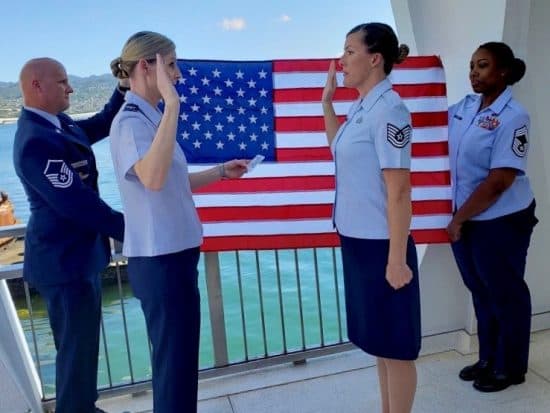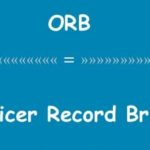During the course of a career, enlisted members of the United States military may receive a monetary bonus for reenlistment. Depending on the service, this bonus can be paid in a lump sum or in installments.
The Selective Reenlistment Bonus Program encourages enlisted personnel to reenlist in critical occupational specialties. The program rewards valuable contributions and is a force management tool.
Depending on a serviceman’s primary MOS, the bonus can be paid in a lump sum or in installments. The size of the bonus is based on several factors, including the length of active duty, the service branch, and the specialty.
The Air Force offers a variety of bonus programs, including explosive ordnance disposal, survival, and special warfare. They also offer bonuses for hard-to-fill specialties. In early April, the Air Force announced an expansion of its Initial Enlistment Bonus program.
A total of $382.7 million in bonus budget was allocated for the fiscal year. This is $18 million for pending final approval and $230.1 million for new contracts.
The Marine Corps also has an expanding SRB program. Up to 5,000 Marines will qualify for the program during the fiscal year. The amount will be based on a Marine’s time spent in the Corps. In addition to the standard award levels, the Marine Corps will be offering higher bonuses for hard-to-fill specialties.
The Navy has also updated its SRB award plan. This change aims to increase stability and flexibility for sailors.
How long does it take to get SRB bonus?
Whether you are an active duty service member or not, you may be interested in learning about the Selective Reenlistment Bonus Program (SRB). It is a program that is intended to retain enlisted personnel in high-risk and critical military skills.
The SRB pays a monetary incentive for reenlistees to maintain end-strength levels accepted by the department of defense. The amount is determined by several factors. Some of these factors include the individual’s previous service years, MOS, and specialty.
In order to qualify for the SRB, you must be an E-3 or higher rank. You also must have at least 17 months of continuous active service. The bonus can be paid in lump sum or in installments.
The SRB is designed to encourage reenlistments in critical military skills and in a variety of specialties. These include aviation, nuclear, medical, and other professional fields. Some of the military occupational specialties that are eligible for the SRB are cryptologic language analysts, aircraft maintenance, and pharmacy.
According to the Department of Defense, the SRB is not to be confused with the Section 355 Critical Skills Retention Bonus. These programs are meant to reward reenlistees for their assignment to a high-priority unit.
The Selective Reenlistment Bonus program targets experienced airmen in stress-prone and costly career fields. It includes 72 specialties in the Air Force. A bonus of up to $20,400 per year is payable for a total of 20 years of enlisted service.
What is the selective retention process?

Putting the voodoo aside for a moment, the selective retention program is worth a look if you’re in the military. The program is a monetary incentive for active duty service members to perform a rite of passage involving a minimum of 17 months in the service.
The program was instituted in the late ninteenth century and remains active to this day. The program pays a hefty sum to veterans and newbies alike for up to 20 years of service in the armed forces. On a related note, the Navy and Marine Corps also offer an SRB program. For the enlisted man, the best rewards are a promotion, relocation, or a new duty station. The program isn’t without its kinks. For example, enlisted Soldiers must have at least 14 years of active service before they qualify for this prestigious honor. The list of eligible Soldiers is constantly being shuffled around to provide the most competitive pay and benefits packages possible. If you’re in the military, you may be a little too busy to take advantage of such programs, but you better believe your commanding officer will. Aside from the SRB, you can also find a variety of perks, such as discounted healthcare, education, and travel. To ensure that your buck goes as far as possible, the military’s HRC is tasked with keeping tabs on who gets what.
What does SRB mean on Les?
Getting a Selective Retention Bonus (SRB) is a monetary incentive offered to Soldiers. These bonuses are intended to increase enlisted reenlistments in critical MOS, to retain highly qualified service members, and to maintain end-strength levels acceptable to the Department of Defense.
There are actually 72 eligible Air Force specialties. Each of these is different in a number of ways, so determining which one deserves a bonus may require some sleuthing.
A service member must meet specific DoD requirements to be eligible for a reenlistment reward. Some of these include a minimum number of years in service and a corresponding maximum dollar amount. A bonus can be earned in the form of a lump sum or in installments. If the service member authorizes an installment plan, 50% of the bonus will be paid upfront.
The actual amount of the SRB is variable, depending on the circumstances. The maximum prescribed by law is $90,000 for a three-year reenlistment period. A re-enlistee might not qualify for this monetary reward, however. This entails several important steps, including checking with the local finance office to find out how much you can expect to receive.
The SRB is a great tool for retaining Airmen in undermanned or stressful specialties. In particular, it is intended to stimulate re-enlistees in the military medical field by offering a hefty monetary reward for completing the most complicated tasks.
How is Navy SRB bonus calculated?

Getting the Selective Reenlistment Bonus is an incentive to continue serving in the military. There are two main ways to calculate the SRB bonus: pay grade and length of enlistment. You can also check with the personnel office for additional information.
The SRB is calculated by multiplying the basic pay amount from the 2020 military pay chart by the number of months the reenlistee is eligible for. For example, if the reenlistee was a rank SPC or PFC with 26 years of active service, he or she could reenlist for 36 months. The person receiving the SRB will receive 50% of the bonus up front. The remaining amount will be paid out in installments.
The maximum SRB is capped at $100,000. The amount may be paid out in increments up to $45,000 but may be paid out in lump sums. Depending on the circumstances, the actual amount of SRB will vary.
The SRB is processed based on the CCC’s paygrade request. The SRB will only be approved if the CCC’s request is correct. The SRB is not re-calculated unless the CCC requests a correction. In most cases, the SRB will be re-calculated once funds for the new fiscal year are received.
The SRB is updated quarterly. The amount of the bonus will depend on the critical need for a particular skill set. It is not always possible to predict exactly how much money you will receive, but you can expect to get half of the bonus upfront. During the first three years, you can expect to receive $16,667. The remaining amounts are paid out in equal installments.
How do you compute SRB amounts?
A solid grasp of the latest SRB award guidelines and eligibility is the key to a successful SRB application and payout. The most important step in the SRB process is to elicit the assistance of an SRB advocate. The SRB advocate is a seasoned military veteran who has completed a minimum of ten qualifying cycles and has the requisite zeal and commitment to uphold the SRB program’s high service standards. The SRB advocate’s role is to guide the reservist jubilant and ensure a smooth SRB application and SRB payout. The SRB advocate is also a good source of unbiased SRB information. The SRB advocate is also responsible for tracking the SRB award program’s status and performance to ensure a smooth SRB payout. The SRB advocate is a zealous SRB advocate who has a vested interest in upholding the SRB program’s high standards of courtesy, loyalty, and discipline. The SRB advocate is also a well-informed reservist who has a vested interest in providing guidance to the reservist jubilant. The SRB advocate is also responsible for upholding the SRB program’s high-fidelity commitment to uphold the SRB program’s commitment to delivering a high-quality, comprehensive, and efficient SRB program. The SRB advocate is a devoted SRB advocate who has a vested financial interest in upholding the SRB program’s commitment to a smooth SRB payout.

